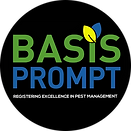top of page

®
01282 777549
" The North West's Solution For Pest Management, Prevention & Bird Control Solutions "
.png)

%20(1).png)
.png)

Fleas
Life Cycle & Description
Description of Cat Flea
(Ctenocephalides felis)
Habitat
Parasitic as adults, adapted to living among the fur of the host and feeding on its blood. Larvae live on floor or in bedding of host feeding mainly on faeces (droppings) of adult fleas.
Biology
Egg – larva – pupa – adult.
Eggs – up to 1,000 per female, Imm, white, laid after a blood meal in small batches amongst the fur of the host. They usually drop off the host onto the floor or among bedding. Hatch in a few days.
Larvae – legless, whitish up to 5mm long, thrive best in humid places in host bedding on or floor. 2-3 moults, fully grown in about 3 weeks.
Pupae – in cocoon spun by larva. Normal emergence in 2–4 weeks in response to vibration. Delayed by up to several months if not stimulated.
Adults – about 2mm long, brown, wingless, laterally flattened and with large hind legs for jumping.
Importance
Irritation caused by bites. Cat flea not implicated in disease transmission in UK. Dog Flea is intermediate host of a tapeworm.
Control
Treatment of host animal using veterinary products only . Vacuuming (dispose of bag contents). Disposal or cleaning of bedding. Careful insecticide treatment of floors, carpets. Use residual products and consider those containing insect growth regulators.
Distribution and Habitat
The cat flea is cosmopolitan and is found widely throughout the British Isles. It is by far the commonest of the flea species that comes in contact with humans, and despite its name it is also commonly found on dogs. The adult cat flea spends a variable proportion of its time off the host, resting in the latter's sleeping and bedding areas. Larvae of the cat flea, in common with most other species of fleas, feed in and around the bedding areas on dust, debris, flakes of skin and fur and dead insects.
Biology
The female cat flea lays fairly large eggs (for the size of the insect) approximately Imm in length, oval, white and translucent. Although slightly sticky the eggs almost invariably fall off the host and into the bedding area and two or three days later they hatch. White, legless larvae emerge and begin feeding on a variety of materials, including any animal protein debris they can find, and especially the blood-rich excreta of the adult fleas. This is a major source of nutrition for the larvae since the adults have a poor and incomplete digestive system resulting in the faecal pellets being rich in undigested blood from the host. The flea larvae shed their skins two or three times over a three to four week period, eventually spinning a flimsy silken cocoon near their feeding area. This may be in the cracks in floor boards in houses and is often in and amongst the bedding of the host animal.
The developmental period in the pupal stage varies with temperature, the adult fleas usually starting to emerge from the pupae within about a month. The adult may remain within the cocoon until the passage nearby of a potential host stimulates its final emergence. This reliance on stimulation from physical vibration is an efficient way of preserving energy to maximise the food stored from the larval phase. Both male and female adult fleas feed prolifically from the host that need not be cats but can include dogs, small rodents and possibly other small mammals. Although the female cat flea requires the blood of its true host to lay viable eggs, in the interim it is not averse to feeding voraciously from humans. Almost invariably cat fleas will attack the lower portions of the legs, especially around the ankles. Frequent flea bites higher up the body would normally indicate human fleas, especially if the bites are concentrated around the waist and abdomen.
Importance
Although fleas generally are considered to be vectors of disease, there is little evidence to suggest that the cat flea transmits any serious illnesses to humans. Far more important are the highly irritating nature of flea bites on some humans, especially children, and the ability of this species to remain dormant in buildings over long periods. Even if pet bedding is disposed of in an attempt to eradicate fleas re-infestation will occur unless extremely thorough cleaning has taken place. It is likely that unnoticed cocoons will remain within the carpet or under carpets, just waiting for some form of stimulation from a potential host to emerge and start the cycle again.
There may be a delay of several hours between a bite and the reaction. This may confuse attempts to discover the source of an infestation.
Control
Most control operations will be against the cat flea but other species may be involved. If in doubt obtain accurate identification of species. Similar principles will apply to most flea species, varying according to the habits of the host. Reports of flea infestations in office buildings may sometimes be due to skin irritations caused by static charges, carpet or paper fibres or by the delayed reaction to bites obtained elsewhere.
When carrying out flea treatments in heavily infested premises, particularly long unoccupied properties, it is worth taking precautions to avoid being bitten. Fleas can only jump vertically about six inches so wearing wellington boots is a sensible move.
Flea infestations must be attacked simultaneously from a number of angles. Firstly, the adult fleas should be controlled either while transiently on the host or in their resting places around bedding, pets' baskets, carpets, sofas and chairs. The use of a vacuum cleaner may assist treatments by physically removing all stages from floors and furnishings but the bag contents should be quickly disposed of carefully or burnt.
A number of products are available for the treatment of pets, some residual and some systemic, and these can be obtained through veterinary practices. Only those products with veterinary approval should he used on animals. Thorough cleaning best disinfests bedding .
A number of residual products are available for flea control but care should be taken to use formulations that will not harm furnishings or fabrics. It is important to be thorough and to treat all floor surfaces, even under and behind furniture and areas where pets spend more time. Cocoons containing pupae are relatively tolerant to penetration by insecticide and emergence may still occur some time after treatment.
Insect growth regulators have been shown to have a long-term effect in preventing proper completion of the flea life cycle from larvae through to the adult stage. A juvenoid (pyriproxyfen) and a chitin synthesis inhibitor (flufenoxuron) are available for professional use. These will not kill adult fleas and are usually used in conjunction with a conventional insecticide either ready mixed (flufenoxuron) or as a tank mix (pyriproxyfen). Methoprene, another juvenoid, is available as an aerosol for use by the general public.
Other Flea Species
Dog Flea - (Ctenocephalides canis)
There is very little difference in physical appearance or in habits between the dog flea and the cat flea described in detail above. Both species are inter-changeable from one host to the other and both species will readily bite humans. The dog flea is less common in the UK than the cat flea, but in most other respects is very similar.
Oriental Rat Flea or Tropical Rat Flea (Xenopsy IIa cheopis)
This species is infamous for its having spread the Bubonic Plague or Black Death throughout Europe and Britain twice over the past few hundred years: once in the 14th century (the Black Death) and again as the Plague of London in the 1660s. The flea naturally infests several species of rodents, but particularly the ship rat (Rattus rattus) , and this generally restricts its range in Britain to large port areas where ship rats have become established. The adult flea readily bites humans, making it an important vector of rodent borne diseases. Its life cycle varies in detail from those of the cat flea and the human flea but in broad principle the life cycle and habits are similar. One important difference is that the Rat Flea tends to spend most of its time on the host animal, in contrast to the Human Flea that spends little of its time on humans.
Bird Fleas - (CeratophyIIus spp .)
Several Ceratophyllus species occur and are mostly host specific. C. gallinae, the hen flea, is quite a common parasite of many wild birds and also a serious problem, on occasion, in poultry rearing establishments. It seldom feeds on humans, and only when hungry. C. columbae, the pigeon flea, is more host-specific singling out domestic pigeons, feral pigeons, and the rock dove. Again, it is an infrequent feeder on humans.
Rabbit Flea - (SpilopsyIIus cunicuIi)
This species is found on domestic and wild rabbits where it normally remains attached to the ears. It is the main vector of myxomatosis in Britain.
Cable Bugs
There is a phenomenon that can occur in office situations where staff claim to have been bitten at work, but no evidence of the culprit can be found. The scenario is often similar with there being open plan offices, synthetic nylon carpets, a large amount of electrical equipment and often a dry atmosphere. Staff (most frequently females) complain of bite on the legs and are able to show red marks, which are similar in appearance to insect bites.
However thoroughly the pest control technician searches, biting insects are rarely found and the most common reason for this is the build up and consequent discharge of static electricity. The scenario described above results in the build up of static electricity on staff and this can be discharged instantly when the person is earthed. This often happens when the person sits down and touches a metal chair leg resulting in the "bite" on the leg. Other reasons can be irritation by slithers of paper or particles of fibreglass from air conditioning filters.
Control can be achieved by the use of anti-static mats or sprays and also by raising the humidity levels in the offices. Technicians should not apply insecticides unless they have found an insect infestation to deal with, although spraying with water can help raise the relative humidity. However, if water only is used, the customer should be informed.


If your having issues with Fleas or any other pest related problem within your commercial or domestic property then please feel free to contact us on 01282 777549 or email us at info@atlasenviro.co.uk for an immediate response.
We are the leading service provider for pest control services in Burnley and Lancashire!
bottom of page








